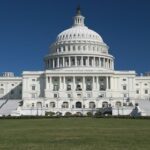Charlotte Evans is avidly watching the news about coronavirus vaccines – and as soon as one is available to her, she’ll be lining up to get it.
An elementary school librarian in Rock Hill, South Carolina, Ms. Evans is at work five days a week, seeing six classes a day of children, who are otherwise tightly podded with their classroom teacher.
“This is a hard, hard way to teach,” says Ms. Evans, who also has a diagnosis that puts her in a higher-risk category. “For a lot of us it feels more like a race. Can we get the vaccine before we get COVID?”
Assuming the U.S. Food and Drug Administration approves it, the Pfizer vaccine will likely be available around Dec. 14. Moderna’s could be ready a week later. But with limited availability and high demand, one of the top questions has been just who the vaccines will go to. It’s up to states to make those decisions.
Want to publish your own articles on DistilINFO Publications?
Send us an email, we will get in touch with you.
Last week, the Centers for Disease Control and Prevention’s Advisory Committee on Immunization Practices issued a nonbinding recommendation for the top tier of vaccine recipients: front-line health care workers and residents of long-term care facilities, like nursing homes. And there has been widespread consensus that those are the populations who should be at the front of the line.
But after that, it gets more complicated. Should older Americans be prioritized, even if they are able to isolate? What about younger, lower-risk individuals whose jobs present opportunity for exposure? Where do teachers fit into the equation, or individuals who are incarcerated or living in a homeless shelter? Should allocation guidelines prioritize protecting at-risk individuals or getting society back to a semblance of normal functioning? And how will they fairly treat many disadvantaged populations who have suffered disproportionately under the pandemic?
Any framework for allocation is trying to balance three competing goals, explains Alta Charo, a professor of law and bioethics at the University of Wisconsin–Madison: preventing hospitalization or death, slowing the pandemic overall, and trying to return key areas of public life to full function.
“Each of those goals lead you to somewhat different ordering of your priorities, says Professor Charo, who served on the National Academies committee that produced a report on equitable vaccine allocation. “Overlaying all of that is the general recognition that there are some groups that have been historically – and now by the pandemic currently – disproportionately burdened. … It gets complicated because there is no right answer.”
Theory meets practice
One way that Professor Charo and others suggest health officials could balance those competing demands is to first focus on people who fall into multiple categories: essential workers who also have underlying health conditions, for instance.
But while that might be the most ethical way to proceed, experts caution that it can also run afoul of basic practicalities. Distribution mechanisms and logistics are going to be extraordinarily difficult for states, many of which have already indicated they lack the resources they need. The Pfizer vaccine, in particular, needs to be stored at ultra-cold temperatures and comes in a crate with 975 doses which, when opened, need to be administered within a matter of hours.
“It really is only practical to only drop into one location and vaccinate everyone you can in that one location,” says Eric Toner, co-author of a report on vaccine allocation published by the Johns Hopkins Center for Health Security.
And there are competing goals between focusing on the priority groups first and getting as many people vaccinated as possible, adds Dr. Toner. “Imagine a 20-something takes his grandmother to be vaccinated. You vaccinate the grandmother. Do you also vaccinate the 20-year-old? Or do you say ‘no, come back in three months?”’ There are a whole bunch of decisions like that.”
Guidelines – and how they can get complicated
The guidelines suggested by the National Academies report offer one way of balancing competing priorities. In those guidelines, the first tier to be vaccinated would include high-risk health care workers and first responders, followed by people whose underlying health conditions put them at significantly higher risk and older adults living in congregate settings, like nursing homes. Phase two would prioritize teachers and K-12 school staff; essential workers in high-risk settings; people whose underlying health conditions put them at moderately higher risk; people in group living settings like homeless shelters, group homes, or prisons; and older adults.
But ranking such categories – and even ranking within categories – can get complicated quickly. Many older Americans, for instance, are eager for a vaccine. But age by itself tells relatively little about their risk or overall health, especially if they’re able to isolate, say doctors.
“Someone who is independently living comfortably in a home where they’re socially isolating and getting Grubhub and groceries delivered is very different from someone in a nursing facility with multiple diseases, in congregate living,” says Monica Peek, a doctor of internal medicine at the University of Chicago and co-author of a paper on prioritizing vaccine access during the pandemic.
There’s also significant pressure to expand groups – understandable, but counterproductive, says Govind Persad, a professor of health law and bioethics at the University of Denver, and a co-author with Dr. Peek. In one case, he says, people involved in funeral work were lobbying the National Sciences committee to be included in their guidelines as health care workers. “They’re doing important work, but I’d be hesitant to say we should assign the same importance to funeral directors as to [intensive-care] nurses,” says Professor Persad.
Many of the loose rankings suggested by advisory committees make sense, say experts, but they caution that the reality will probably involve a lot of overlap.
It will be challenging to simply identify who is in each category, how to get the vaccine to them, and how to earn their trust, says Dr. Peek. “It’s going to be a complicated system of implementation for everything,” she says.
Marginalized communities at risk
Dr. Peek and others also hope states will consider equity issues when they make their plans. Many of the communities hit hardest by COVID-19 are also disproportionately low income with higher numbers of racial and ethnic minorities. Simply singling out certain racial groups for priority access can be problematic. But using guidelines that acknowledge these inequities – and give some priority using the CDC’s social vulnerability index – might help, they say.
Uché Blackstock, the founder and CEO of Advancing Health Equity and a Yahoo News medical contributor, says she worries that the current categories may miss key people in marginalized communities: those who haven’t had underlying health conditions diagnosed because of barriers to care, for instance, or people who work in hospitals in cafeterias or environmental services.
“There’s this focus and funding given by the federal government [to develop vaccines], but only a fraction of funds is given to state and local departments of public health to distribute these vaccines,” says Dr. Blackstock.
Given limited resources, it may be tempting for local health departments to target populations who are easier to access first, say experts, but doing so would mean missing many of the most vulnerable, as they may be harder to reach. An older, medically fragile individual living in a crowded multigenerational apartment is harder to find than someone in a nursing home, but has a similar risk profile. Similarly, health care workers in rural America may be fewer in number and much harder to reach, but keeping them healthy could have a huge impact on the people they serve, says Professor Persad.
“It’s important for the people setting these policies to think about not just getting to the lower hanging fruit,” he says.
Transparency and integrity will also be key. “People will be willing to wait when they see people who have a good ethical reason to go ahead of them going ahead,” Professor Persad says. That trust may disappear if they see people with money or celebrity jumping the queue.
What about inmates? Teachers?
Despite consensus about that first tier, states will arrive at different decisions – about certain categories. Teachers are one. Broadly speaking, says Professor Charo, they may be healthier and less at risk than some other workers. But concern about transmission has closed thousands of schools, and reopening those schools is a top priority for many Americans.
How quickly prisons should get vaccines has also been a contentious topic. With populations that are crowded and disproportionately older, minority, and with underlying conditions – not to mention that prisons have been a source of significant outbreaks – many experts see them as having a clear moral and public health priority. But some guidelines have prioritized corrections officers, but not prisoners themselves, and there has already been a backlash against the idea that incarcerated individuals would have early access.
Polls show that not all Americans want to be vaccinated, but in the short term, allocating a scarce resource is a bigger challenge for health officials than gaining that trust. As fraught as many of the conversations are, that we’re even having them is something to be grateful for, say experts. Vaccines have been developed sooner and more effectively than many thought possible. Even for Americans who have no special priority, the wait may just be a matter of months.
Source: CS Monitor







